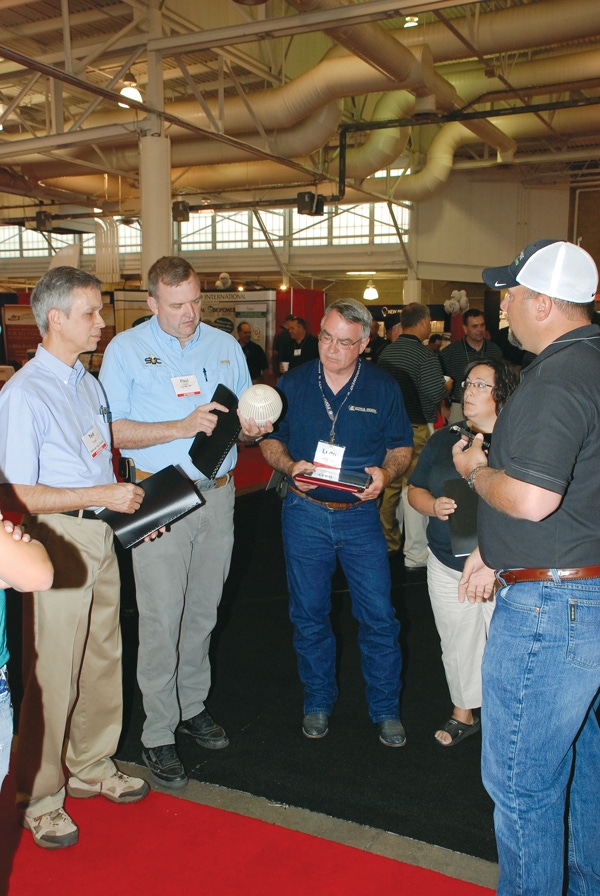The Bioverse AgraSphere went on the market last fall after eight years of development, according to Bioverse’s Brad Carson. The product distributes beneficial bacteria into manure storage systems to reduce sludge buildup and crusting using a biodegradable sphere made of a corn-based polymer.

The Bioverse AgraSphere went on the market last fall after eight years of development, according to Bioverse’s Brad Carson. The product distributes beneficial bacteria into manure storage systems to reduce sludge buildup and crusting using a biodegradable sphere made of a corn-based polymer.
The AgraSphere acts as an incubator at the bottom of the manure storage structure. While in the system, it is producing beneficial bacteria, thus maintaining the proper level of bacteria to achieve the liquefaction process.
Carson said the AgraSphere remains inactive until it becomes wet. He suggests throwing the balls into the pit through the pump-out ports or directly into other types of manure storage structures. Once the product has become activated in the pit, the media lasts approximately 180 days. Six balls are recommended in a 1,200-head finishing barn.
“The AgraSphere has a patented, time-release technology that provides continuous activation while being eco-friendly in the biodegradable sphere,” he said. The product helps liquefy and mix solids into the manure slurry and, thus, increase manure value.
Leon Sheets asked if the product would be impacted if medications are being added to the water in the barn. Carson responded that since the sphere, which contains the beneficial bacteria, is at the bottom of the pit, it repopulates the pit without being harmed by medications.
The panel asked about shelf life and storage. “When dealing with bacteria in a dry form, there are no shelf life or temperature concerns,” Carson said. “The only way to ruin it is to get it wet before it goes into the pit.”
The panel also asked about research to verify the product’s claims. Carson provided research results from ongoing trials showing the product’s benefits.
The Bioverse AgraSphere costs $50/ball. One sphere treats manure from 200 finishing pigs. Carson recommended putting a new set of spheres into manure storage structures approximately every six months.
“This product seems to address a real need,” Ted Funk observed.
Paul Yeske, DVM, liked the concept that microbial activity can be maintained in the manure storage structure. “I also like that you don’t have an expiration date with this product. You don’t have to worry about it being activated until you are ready to use it,” he said.
Sheets also had a positive assessment of the product. “Producers wouldn’t have to back away from the cost,” he noted. “I would feel comfortable trying this product to see what happens because it does have research to back it up. It would be easy to use, too. You could just put it on the calendar when it is time to put in a new set of the spheres.”
Learn more about the Bioverse AgraSphere at www.bioverseag.com.
About the Author(s)
You May Also Like



